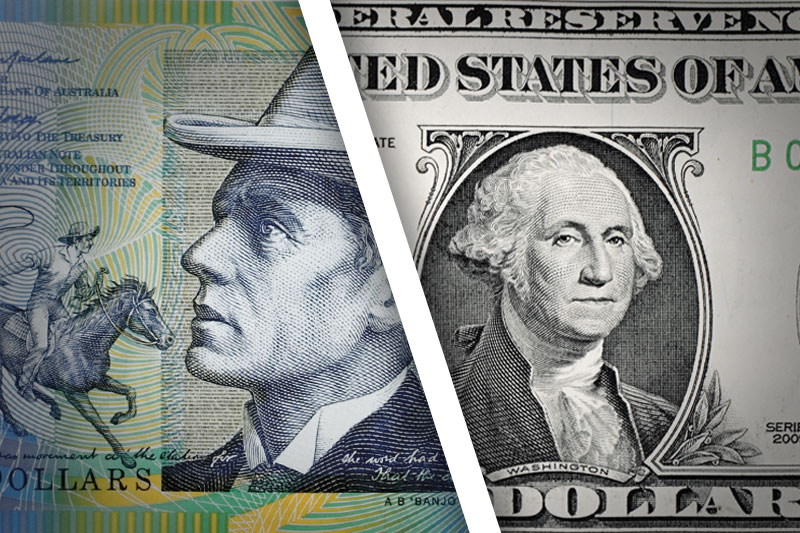Investing.com - The Australian dollar traded lower against its U.S. counterpart during Wednesday’s Asian session following a pair of data points from the world’s 12th-largest economy.
In Asian trading Wednesday, AUD/USD fell 0.31% to 0.9369. The pair was likely to find support at 0.9281, Monday's low and resistance at 0.9457, the high of September 23.
On Tuesday, the Aussie climbed after the Reserve Bank of Australia decided to keep interest rates unchanged at 2.50% in their October monetary policy statement. RBA Governor Stevens’ remarks were considered less dovish than expected, as he remarked that the positive impact of the recent rate cut is just starting to be seen in the economy.
Analysts forecast that there will be no rate cuts for the rest of the year, as Australian retail sales and home prices have shown positive developments in the past months. However, Stevens noted that the Australian dollar is still relatively high and that a lower exchange rate could provide support for the ongoing economic recovery.
However, the Aussie fell Wednesday after the Australian Bureau of Statistics said building approvals there fell 4.7% last week following a 10.2% gain in the prior week. The previous week’s figure was revised lower from a gain of 10.8%. Analysts expected last week’s number to drop 2%.
Separately, the Statistics Bureau said Australia had a trade deficit of AUD815 million in August compared with a July deficit of AUD1.375 billion. Economists expected an August deficit of AUD450 million.
Elsewhere, AUD/JPY lost 0.50% to 91.66 after the Bank of Japan said Japan’s monetary base rose to 46.1% lat month from 42% in August. Analysts expected a September reading of 45.3%.
AUD/NZD jumped 0.33% to 1.1395.
In Asian trading Wednesday, AUD/USD fell 0.31% to 0.9369. The pair was likely to find support at 0.9281, Monday's low and resistance at 0.9457, the high of September 23.
On Tuesday, the Aussie climbed after the Reserve Bank of Australia decided to keep interest rates unchanged at 2.50% in their October monetary policy statement. RBA Governor Stevens’ remarks were considered less dovish than expected, as he remarked that the positive impact of the recent rate cut is just starting to be seen in the economy.
Analysts forecast that there will be no rate cuts for the rest of the year, as Australian retail sales and home prices have shown positive developments in the past months. However, Stevens noted that the Australian dollar is still relatively high and that a lower exchange rate could provide support for the ongoing economic recovery.
However, the Aussie fell Wednesday after the Australian Bureau of Statistics said building approvals there fell 4.7% last week following a 10.2% gain in the prior week. The previous week’s figure was revised lower from a gain of 10.8%. Analysts expected last week’s number to drop 2%.
Separately, the Statistics Bureau said Australia had a trade deficit of AUD815 million in August compared with a July deficit of AUD1.375 billion. Economists expected an August deficit of AUD450 million.
Elsewhere, AUD/JPY lost 0.50% to 91.66 after the Bank of Japan said Japan’s monetary base rose to 46.1% lat month from 42% in August. Analysts expected a September reading of 45.3%.
AUD/NZD jumped 0.33% to 1.1395.
